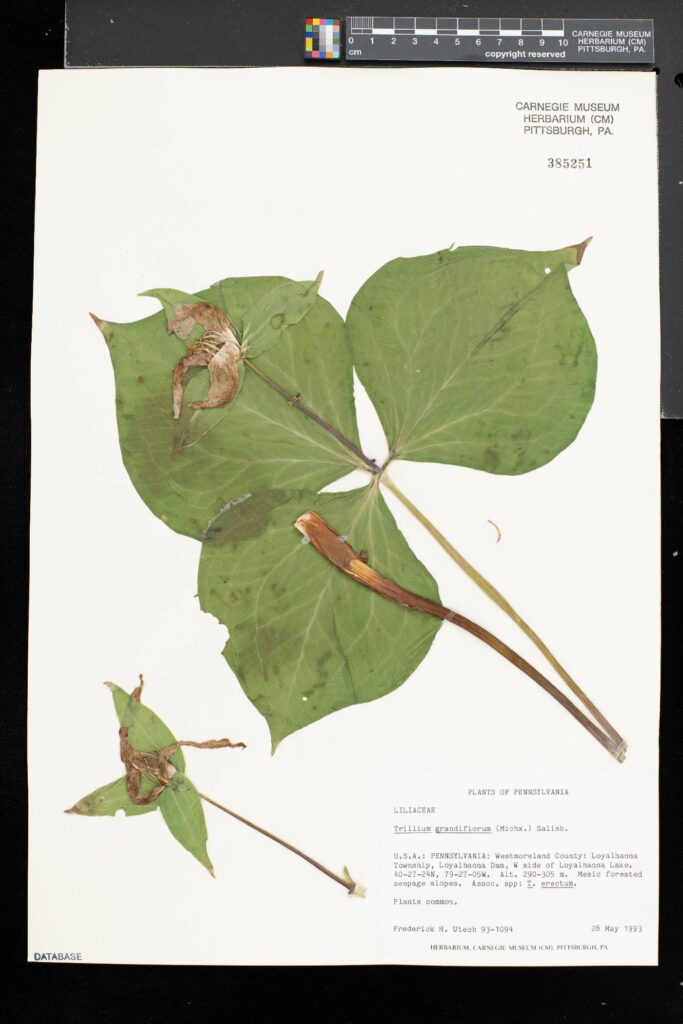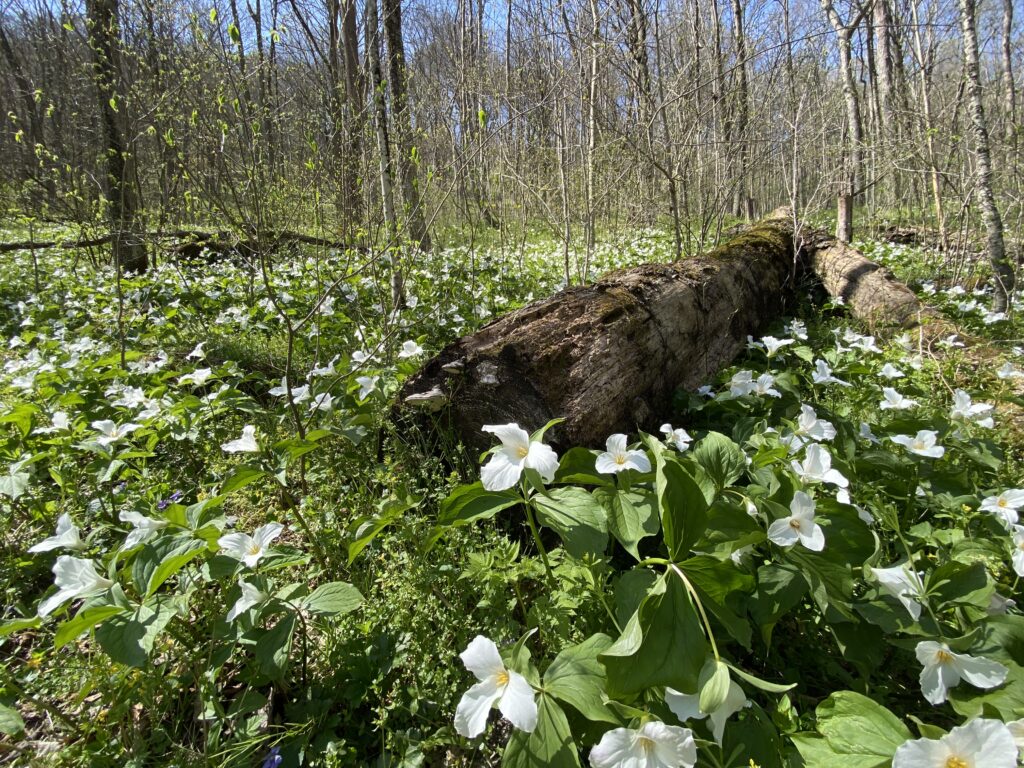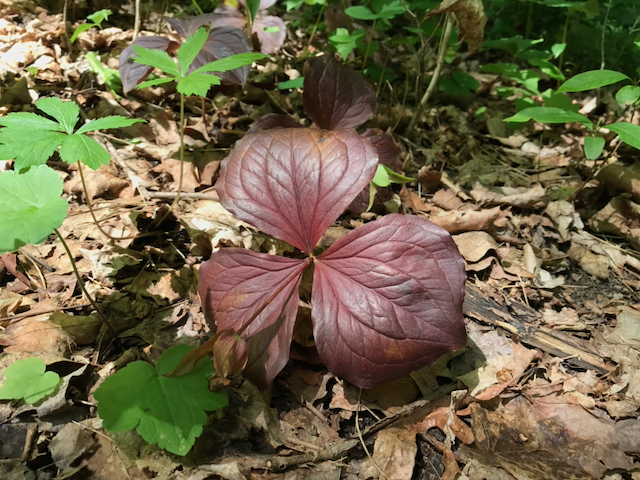by Mason Heberling

Spring flowers fade, but some leaves hang on
This specimen of white trillium (Trillium grandiflorum) was collected by Fred Utech in Loyalhanna Township, Pennsylvania on May 28, 1993. Fred Utech was Curator of Botany at Carnegie Museum of Natural History from 1976-1999. You can find this specimen here and search for many more trillium at midatlanticherbaria.org.
Trillium grandiflorum (white large-flowered trillium) is perhaps the most common trillium species in western Pennsylvania, along with Trillium erectum (red trillium, though petals can be white, red/purple, or occasionally yellow; the ovary is deep red, unlike white trillium). Peak blooms of this species can be breathtaking when covering hillsides. Deer also enjoy trillium, and herbarium specimens have been used to understand their impact.

As the heat of summer is upon us, these spring blooming species begin to fade. Or at least their flowers do. Some trillium keep their leaves into the deep shade of summer. Though light levels are low due to the shade of overstory trees, early summer is an important time for many spring blooming species to develop their fruits. A local study from our group found more than 20% of photosynthetic energy gains in Trillium grandiflorum after overstory trees produced leaves.
White trillium leaves do die back in mid-summer, however. We often think of leaf coloration in the fall, but some trillium curiously have leaves that turn a deep red as they fade in mid-summer. We are currently working up an undergraduate students-led project on this intriguing natural history phenomenon. Only about 10% of plants turn red (but highly variable), and first results suggest there doesn’t seem to be a method to the madness that explains why. More soon! For now, enjoy the “fall” foliage of summer below.

Mason Heberling is Assistant Curator of Botany at Carnegie Museum of Natural History.
Related Content
Collected On This Day in 1925: A Flower with No Leaves?
Collected On This Day in 1982: One Specimen Isn’t Always Enough!
Mayapple at Powdermill [Video]
Carnegie Museum of Natural History Blog Citation Information
Blog author: Heberling, MasonPublication date: May 30, 2023
